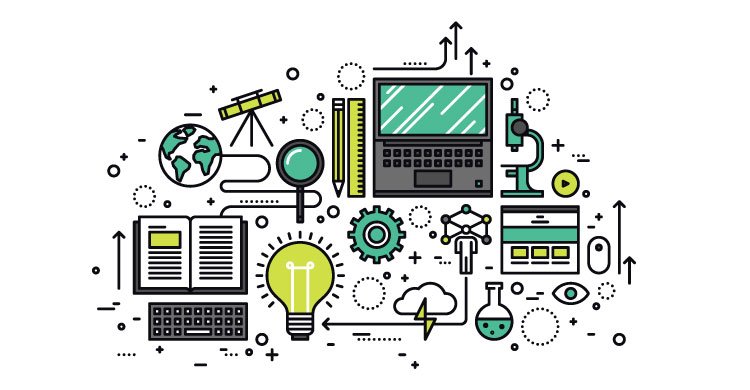Equip Your Business Procedures with the most up to date AI Tools Available
Equip Your Business Procedures with the most up to date AI Tools Available
Blog Article
Comprehensive Company Guides for Progressing Innovation Education And Learning in Schools and Colleges
The combination of innovation education right into college and college curricula has actually become a critical imperative in preparing pupils for an increasingly digital workforce. Comprehensive business guides play a critical duty in this transformation by outlining the needed structures for effective program implementation, cultivating vital market partnerships, and gauging academic outcomes. As universities make every effort to straighten themselves with market needs, the difficulties and opportunities offered by these guides merit a closer evaluation. Insurance. What specific approaches can be adopted to maximize their effect on both students and educators?
Relevance of Modern Technology Education
As modern technology proceeds to advance at an unprecedented speed, the relevance of modern technology education and learning has actually ended up being significantly noticeable in today's culture. The combination of modern technology into various elements of life necessitates that individuals possess a fundamental understanding of technical ideas and applications. This knowledge not only enhances employability however also promotes crucial thinking and analytic skills essential for browsing a dynamic workforce.
In schools, technology education furnishes students with the capacity to adjust to fast adjustments in industries driven by development. It urges imagination and equips learners to engage with emerging technologies, from man-made knowledge to information analytics. In addition, technology education and learning promotes digital proficiency, which is crucial in an era where details is conveniently available yet frequently misleading.

Key Components of Effective Guides
Effective guides for modern technology education and learning need to incorporate several key parts to make sure that students get one of the most from their experiences. First, a well-defined curriculum is vital, describing the goals, learning outcomes, and the abilities to be created. This educational program ought to be frequently updated to reflect the rapidly evolving technical landscape, guaranteeing importance and applicability.
Second, thorough resources that consist of books, online products, and hands-on tools are crucial. These sources need to be varied and obtainable, satisfying numerous learning preferences and styles. In addition, integrating real-world circumstances and study can improve understanding and engagement.
Third, assessment methods should be consisted of to examine student development successfully. These analyses must be differed, encompassing cumulative and developmental analyses that straighten with the learning objectives.
In addition, professional advancement possibilities for educators are crucial. Training workshops and programs can outfit teachers with the most recent technical advancements and instructional strategies.
Last but not least, promoting a joint knowing atmosphere urges peer communication and knowledge sharing. By consisting of these key parts, guides for modern technology education can significantly enhance the learning experience, preparing trainees for future challenges in a progressively digital world.
Structure Industry Collaborations
Structure strong industry partnerships is a crucial element of boosting technology education. These partnerships in between educational establishments and businesses produce a dynamic ecosystem that benefits teachers, employers, and trainees alike. By cultivating connections with market universities, leaders and schools can align their curricula with the advancing needs of the task market, guaranteeing that students get appropriate skills and understanding.
The development of internships, instructions, and mentorship programs works as a cornerstone of these collaborations. Such possibilities supply trainees with hands-on experience, enhancing their employability and sensible understanding of innovation applications. In addition, sector companions can use insights into arising trends and technical innovations, allowing educators to adapt their mentor methods appropriately.
Moreover, collaborations can assist in accessibility to sources, such as tools, software program, and funding for research tasks. These contributions enhance the learning atmosphere and allow organizations to stay at the center of technical innovation. Inevitably, building robust market partnerships is important for growing an experienced labor force that satisfies the demands these days's swiftly transforming technological landscape, while likewise driving financial development and competitiveness in the wider community.
Implementing Technology Programs
Carrying out modern technology programs within instructional organizations calls for a strategic technique that prioritizes both curriculum growth and source appropriation. To initiate successful innovation assimilation, institutions should initially analyze their existing framework and identify spaces in sources, including hardware, software application, and employees training. This evaluation makes it possible for universities and colleges to create a tailored plan that aligns with their specific academic goals.
Following, it is important to establish a thorough curriculum that incorporates emerging technologies and industry requirements. Collaborating with instructors, market professionals, and stakeholders can make sure that the educational program stays relevant and reliable in preparing trainees for the labor force (Insurance). Additionally, professional development for professors is vital, as address it furnishes educators with the skills essential to effectively instruct new technologies
Moreover, institutions ought to emphasize the value of hands-on discovering experiences, such as workshops and labs, that permit pupils to use academic knowledge in practical setups. This experiential technique improves interaction and fosters crucial reasoning. Lastly, safeguarding sustainable financing through grants and partnerships can aid broaden and preserve innovation programs, ensuring long-lasting success and flexibility in an ever-evolving technical landscape.
Determining Success and Outcomes
Evaluating the success and outcomes of technology education and learning programs is essential for validating their effect and assisting future enhancements. Reliable measurement structures need to incorporate both qualitative and measurable metrics, providing a comprehensive view of program efficacy. Key performance indicators (KPIs) such as pupil registration figures, retention prices, and program completion percents offer important measurable information.

Incorporating standard assessments can additionally evaluate pupils' technical competencies and readiness for the labor force. Benchmarking versus similar organizations enables contextually appropriate comparisons, highlighting areas for growth.
Inevitably, the continual evaluation of technology education and learning programs promotes a culture of improvement, making sure that they advance in positioning with market demands and instructional standards. By systematically measuring success, organizations can not only demonstrate liability to stakeholders however also boost their offerings, consequently enhancing the finding out experience and preparing students for the ever-changing technological landscape.
Final Thought

The assimilation of technology education into institution and college educational program has actually ended up being a crucial essential in preparing trainees for a progressively digital labor force.As innovation continues to progress at an unprecedented pace, the value of technology education and learning has actually become increasingly noticeable in today's culture.In educational establishments, technology education furnishes students with the capacity to adjust to rapid changes in sectors driven by development. By prioritizing technology education, organizations can cultivate a generation of educated people capable of leveraging technology for individual and societal development. The application of durable assessment strategies enables institutions to gauge success and end results, ultimately boosting the general efficiency of modern technology education campaigns and preparing trainees for future obstacles.
Report this page